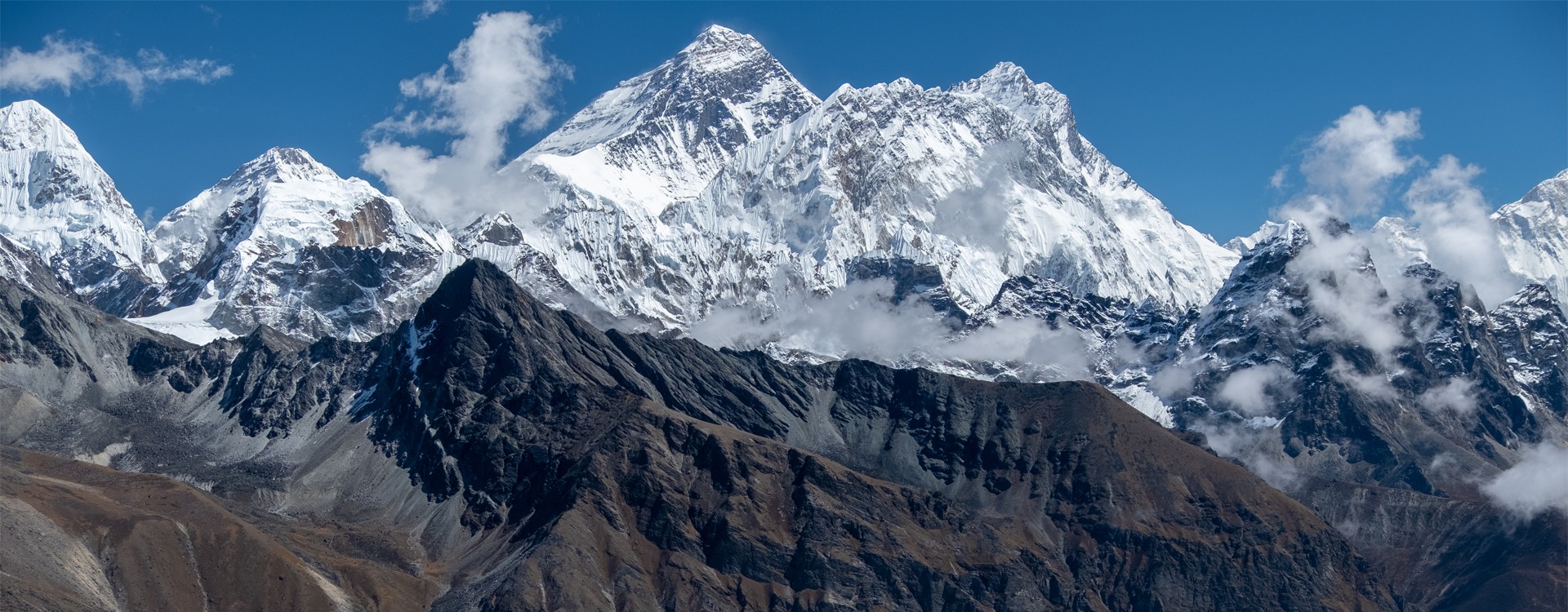Located in northern Himalayan region, Everest region is renowned for its high mountains and ethical Sherpa tribes. Home of world’s greatest peak Mt Everest and brave Sherpas, Everest region has a breathtaking landscape, beautiful sceneries. No access to the road network, the only way to get to this region is Lukla Airport which is also known to be most challenging airport in the world. So, we can understand the level of excitement and adventure from the starting of this point. Everest region has stored world-famous trekking route AKA Everest Base camp trekking route and Everest Expeditions. Let’s find more about Everest Region.
- World’s Highest Mountain, Everest: The world’s highest mountain Mt Everest (8,848m) is also known as Sagarmatha in Nepali. Everest has been dream for many adventure seekers around the globe and has successfully submitted too. This region not only has Mt Everest but mt Everest has been surrounded with other over 8,000m peaks such as Lhotse, Nupste, Ama Dablam and many more.
- Trekking: Everest Region is famous for world renowned Everest base camp trekking. Minimum 12 days trekking from Lukla “Gateway to Everest” till Everest Base camp is rewarding moments. There are 3 most choose trekking route in this region.
- Everest Base Camp Trekking
- Everest Base Camp via Gokyo
- Everest Base Camp and Three Passes
All these trekking routes ends up to Everest Base Camp in Kalapathar but has different routes and different types of challenges. So, make sure your physical fitness is in extreme level. You will need the trekking permits from local authorities before entering this region. All our trekking packages is lead by experience trekking guide and you will have porters through out the trek. Our trekking packages are formed in small group so enjoy the trip with new friends.
- Mesmerising Landscapes: Everest region is home for beautiful snowcapped Himalayas such as Mt Everest, Lhotse, Nuptse, Ama dablam and many more. Along with these mountains, Everest region is home for many glaciers among them Gokyo is the famous one. Our Everest base camp via Gokyo takes you to the stunning Gokyo lakes, a series of turquoise glacier lakes surrounded by beautiful high mountains. The beautiful sunrise and sunset are truly magical in this region so don’t forget to wake up early.
- Home of Sherpa Tribe: The Sherpa people are an ethnic group indigenous to the mountainous regions of Nepal and the Everest region is home for sherpa peoples. The Sherpa culture is deeply rooted in Tibetan Buddhism and is reflected in their daily lives, traditions, and rituals. Monasteries and stupas (Buddhist shrines) are an integral part of Sherpa villages, and religious festivals play a significant role in their lives. The Sherpas are internationally recognized for their contributions to mountaineering and trekking. They have served as guides, porters, and climbers for numerous expeditions to the Himalayas, including Mount Everest. Tenzing Norgay, a Sherpa, was part of the first successful ascent of Everest in 1953, alongside Sir Edmund Hillary.
Weather in Everest region is unpredictable. Due to diversity in altitude and high Himalayas surrounded this area is always chilling with high winds all the time. This region has 4 weather seasons with each of its own characteristics.
- Spring Season (March to May): This is the best season in this region as the weather starts to warm up after winter. Day time are sunny with clear sky and beautiful mountains. Trekking trails are easy with rhododendron flower (National flower of Nepal) blooming all around forest.
- Summer/ Monsoon (June to August): This season is off season for trekking as the trails are rough due to rainfalls and less visibility of mountains. The high humidity and rain make the trekking route challenging but this region is quite during this season.
- Autumn (September to November): The weather is generally stable and dry making the trekking route easy. Autumn is a best season for trekking because of the weather conditions and its also the festival season in Nepal. Days are warm and comfy whereas nights are bit chilly.
- Winter (December to February): Winter in Himalayas is most challenging time throughout the year making the trekking routes quiet. Snow falls all around the region during this time will lead the authorities to close some of trekking routes due to safety concerns.
Note: Weather is unpredictable in Himalayas region and can change the conditions rapidly. We want our valued trekkers to be prepared for every kind of climatic conditions. Our trekking guide will always update you about the weather conditions and precautions method if anything unforeseen situation comes up.
| EVEREST TREKKING WITH TRAVEL ADVENTURE NEPAL |
Here at TAN, we ensure that you enjoy the adventure in the best possible way and in classic way. Our travel itineraries are handcrafted in such a way that you can savour every moment. Our trekking programs are led by top trekking guides, and we choose the best accommodation wherever possible. Although in Himalayas region our accommodation will be in local tea house.
Everest Region Trekking Packages
1. Everest Base Camp Trek
2. Everest Base Camp via Gokyo Trek
3. Everest Base Camp three pass Trek
What includes in TAN’s Itinerary?
• Accommodation (Hotels in Kathmandu, Tea House lodge during Trek)
• Breakfast (Only in Kathmandu)
• Domestic Flight
• All Ground Transport
• Trekking Guides and Porters
